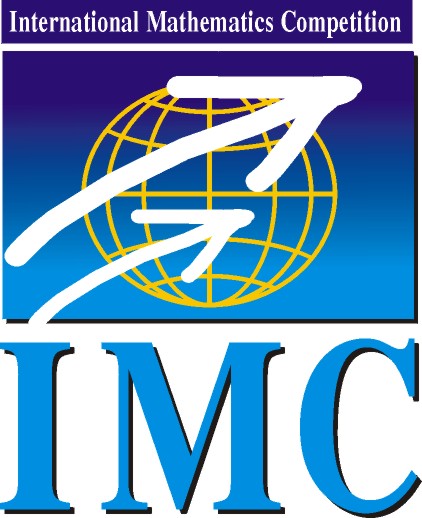
|
International Mathematics Competition
|
IMC 2026 |
| Information | Schedule | Problems & Solutions | Results | Contact |
IMC2025: Problems on Day 2
Problem 6. Let \(\displaystyle f\colon (0,\infty) \to \mathbb{R}\) be a continuously differentiable function, and let \(\displaystyle b>a>0\) be real numbers such that \(\displaystyle f(a)=f(b) = k\). Prove that there exists a point \(\displaystyle \xi\in(a,b)\) such that
\(\displaystyle f(\xi)-\xi f'(\xi)=k . \)
Alberto Cagnetta, Università degli Studi di Udine
Problem 7. Let \(\displaystyle \mathbb{Z}_{>0}\) be the set of positive integers. Find all nonempty subsets \(\displaystyle M \subseteq \mathbb{Z}_{>0}\) satisfying both of the following properties:
(a) if \(\displaystyle x \in M\), then \(\displaystyle 2x\in M\),
(b) if \(\displaystyle x, y\in M\) and \(\displaystyle x+y\) is even, then \(\displaystyle \displaystyle\frac{x+y}{2}\in M\).
Alexandr Bolbot, Novosibirsk State University
Problem 8. For an \(\displaystyle n\times n\) real matrix \(\displaystyle A\in M_n(\RR)\), denote by \(\displaystyle A^{\mathsf{R}}\) its counter-clockwise \(\displaystyle 90^\circ\) rotation. For example,
\(\displaystyle \begin{bmatrix} 1 & 2 & 3 \\ 4 & 5 & 6 \\ 7 & 8 & 9 \end{bmatrix}^{\mathsf{R}} = \begin{bmatrix} 3 & 6 & 9 \\ 2 & 5 & 8 \\ 1 & 4 & 7 \end{bmatrix}. \)
Prove that if \(\displaystyle A = A^{\mathsf{R}}\) then for any eigenvalue \(\displaystyle \lambda\) of \(\displaystyle A\), we have \(\displaystyle \operatorname{Re}\lambda = 0\) or \(\displaystyle \operatorname{Im}\lambda = 0\).
Jan Kuś, University of Warwick
Problem 9. Let \(\displaystyle n\) be a positive integer. Consider the following random process which produces a sequence of \(\displaystyle n\) distinct positive integers \(\displaystyle X_1,X_2,\ldots,X_n\).
First, \(\displaystyle X_1\) is chosen randomly with \(\displaystyle \mathbb{P}(X_1=i)=2^{-i}\) for every positive integer \(\displaystyle i\). For \(\displaystyle 1\leq j\leq n-1\), having chosen \(\displaystyle X_1,\ldots,X_j\), arrange the remaining positive integers in increasing order as \(\displaystyle n_1<n_2<\cdots\), and choose \(\displaystyle X_{j+1}\) randomly with \(\displaystyle \mathbb{P}(X_{j+1}=n_i)=2^{-i}\) for every positive integer \(\displaystyle i\).
Let \(\displaystyle Y_n=\max\{X_1,\ldots,X_n\}\). Show that
\(\displaystyle \mathbb{E}[Y_n]=\sum_{i=1}^{n}\frac{2^i}{2^i-1} \)
where \(\displaystyle \mathbb{E}[Y_n]\) is the expected value of \(\displaystyle Y_n\).
Jan Kuś and Jun Yan, University of Warwick
Problem 10. For any positive integer \(\displaystyle N\), let \(\displaystyle S_N\) be the number of pairs of integers \(\displaystyle 1\leq a, b\leq N\) such that the number \(\displaystyle (a^2+a)(b^2+b)\) is a perfect square. Prove that the limit
\(\displaystyle \lim_{N\to\infty} \frac{S_N}{N} \)
exists and find its value.
Besfort Shala, University of Bristol
© IMC